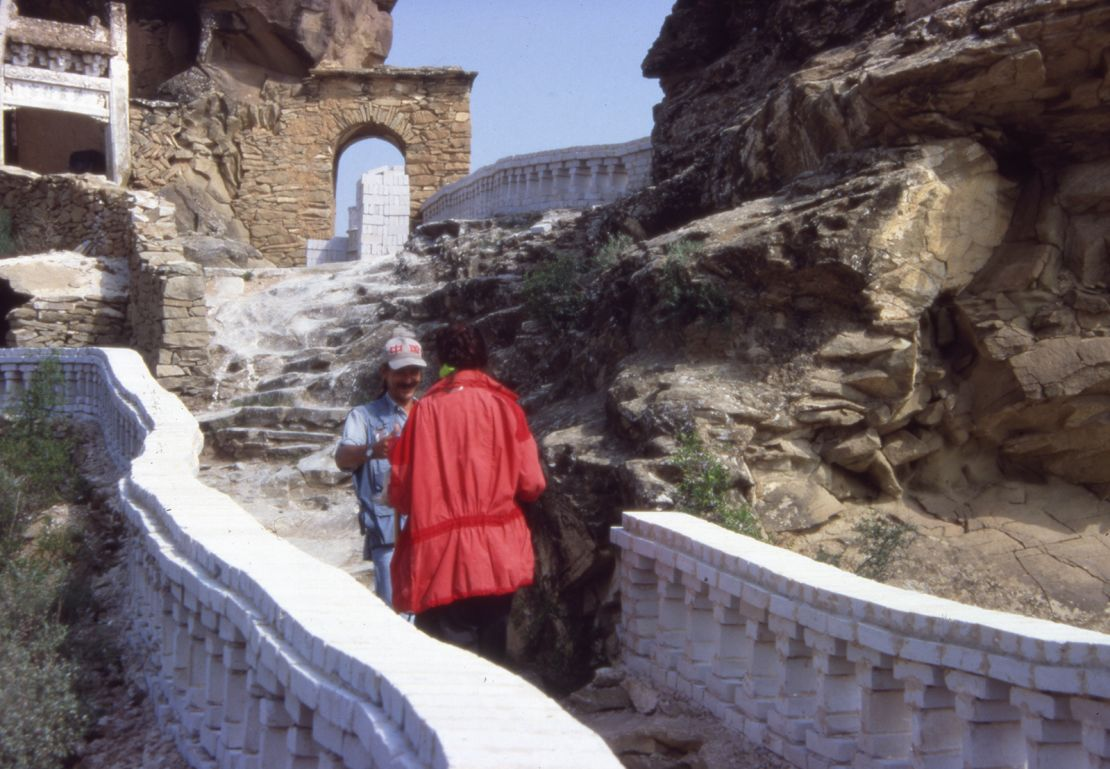A Couple Walked Great Wall of China From Opposite Ends, Met in the Middle, and Then Broke Up. what ??? yes… In 1988, Serbian performance artist Marina Abramovic and German artist Ulay embarked on an extraordinary journey along the Great Wall of China, walking from opposite ends in a symbolic act of love, endurance, and artistic collaboration.
What was initially envisioned as a wedding at the midpoint of their journey turned into a poignant breakup, forever altering the course of their relationship. Their story is a fascinating blend of art, life, and human emotions, culminating in an unexpected end.
The Artists’ Journey: Love, Collaboration, and the Start of The Lovers
Marina Abramovic and Ulay, whose real name was Frank Uwe Laysiepen, met in Amsterdam in 1976 under curious circumstances that would define their relationship for years to come. They both shared the same birthday, November 30, and this initial connection sparked what would become a deep and intense bond.
Read : The Great Wall of China: Whispers of Courage and Unity Through Time
Ulay was immediately drawn to Abramovic’s “witchy and otherworldly” presence, while she found Ulay “wild and exciting.” Together, they formed a partnership that they described as a “two-headed body,” working side by side in both their personal and professional lives.
Read : Engineering Marvel: Discovering the Great Wall of China’s Grandeur
The duo quickly became renowned in the world of performance art for pushing boundaries and exploring the limits of physical endurance. They performed together for years, often in emotionally and physically extreme conditions, challenging not only themselves but also the boundaries of art itself.
One of their most famous collaborations, Rest Energy, saw Ulay hold a drawn bow and arrow aimed directly at Abramovic’s heart. The tension of the string was palpable, a literal metaphor for the tension and vulnerability in their relationship.
For years, Abramovic and Ulay lived a nomadic life, traveling across Europe in a van, performing in small towns and remote villages. This lifestyle mirrored their dedication to exploring the intersections of art, life, and love.
Their collaboration, though intimate and challenging, represented an unparalleled bond between two individuals who saw the world through the same lens.

As their relationship deepened, they envisioned their greatest collaboration yet: The Lovers, a journey that would take them along the Great Wall of China, where they would meet in the middle and celebrate their union through marriage. But fate had a different plan.
The Long Walk: Bureaucratic Delays, Emotional Strain, and Changing Dynamics
The idea for The Lovers began in the early 1980s, but like many ambitious artistic projects, it was riddled with complications. The couple faced years of delays, primarily due to Chinese bureaucracy. Getting permission to walk the Great Wall of China as part of an art project was no easy feat.
Chinese authorities were initially skeptical about the legitimacy of such a proposal, and Abramovic and Ulay had to navigate a complex web of visa rejections, reapplications, and endless negotiations.
By the time the project was finally approved in 1988, five years had passed. And during this time, both artists had undergone significant changes.
The long wait affected their relationship deeply. Abramovic and Ulay had both experienced emotional strain, affairs, and growing distance. The delay had not only caused frustration but had also allowed time for doubts and differences to emerge.
The walk itself, which began on March 30, 1988, was symbolic of the challenges they had faced. Abramovic started her trek from the Bohai Sea, known as the “dragon’s head” of the Great Wall, while Ulay began from the Gobi Desert, referred to as the “dragon’s tail.”
Each walked 2,000 kilometers, covering an arduous journey filled with treacherous terrain, emotional turmoil, and moments of deep reflection.
Abramovic’s walk was particularly challenging as she traversed steep mountains, encountered near-death experiences, and interacted with locals in remote villages, collecting stories of ancient Chinese dragons along the way.
Ulay, on the other hand, trekked through desert landscapes, where the vast emptiness reflected the growing isolation between the two.

Though they had started the journey with the hope of rekindling their relationship and meeting for a wedding in the center, the walk became a metaphor for their growing emotional and physical distance. By the time they finally met on a stone bridge in Shenmu, Shaanxi province, after 90 days of walking, it was clear that the relationship could not survive.
Instead of a wedding, the meeting marked their breakup. They embraced, but the moment was bittersweet. The long walk had not brought them together as lovers but had instead driven them apart.
After the Wall: Life, Fame, and a Silent Reunion
The breakup of Abramovic and Ulay after The Lovers was a defining moment in both their personal lives and artistic careers. Over the years that followed, they each pursued their own paths, but the aftermath of the walk continued to shape their art. Abramovic embraced her growing fame and success.
As her recognition in the world of performance art grew, she became more commercialized, something that Ulay, a self-described anarchist, rejected. The pressures of fame affected them in different ways, with Ulay withdrawing from the spotlight while Abramovic continued to explore new heights in her career.
Despite the emotional toll of their separation, Abramovic and Ulay’s artistic contributions remained intertwined in the public imagination. Their partnership, even in its dissolution, continued to be seen as a powerful narrative of love, endurance, and art. Their work together is still regarded as a significant chapter in performance art history.
In 2010, more than two decades after their walk along the Great Wall, Abramovic and Ulay were reunited in a deeply emotional moment. During Abramovic’s retrospective at the Museum of Modern Art (MoMA) in New York, she staged a piece titled The Artist Is Present.
The performance involved Abramovic sitting silently at a table for 750 hours, inviting visitors to sit across from her and engage in a wordless exchange.

On one of the days of the performance, Ulay sat down in front of Abramovic. The moment was charged with emotion, as the two former lovers locked eyes after 22 years of separation. In a silent exchange, they reconnected, sharing the intense emotions of their past without words.
The moment resonated with millions of people around the world, encapsulating the complexity of love, art, and human relationships.
This reunion, though brief and silent, became one of the most iconic moments in performance art history. It was a reminder of the deep bond they had once shared, and of the ways in which time and distance can alter relationships, but never fully erase them.
An Artistic Journey of Love, Separation, and Reunion
The story of Marina Abramovic and Ulay’s walk along the Great Wall of China is one of love, endurance, and artistic ambition. What began as a grand gesture of love and collaboration ended in separation, but their journey continues to inspire.
Their breakup on the stone bridge in Shenmu was not the end of their connection, but a transformation. Their reunion decades later during The Artist Is Present brought closure to their journey in a way that words never could.
As artists, Abramovic and Ulay pushed the boundaries of performance art and tested the limits of their emotional and physical endurance.
Their relationship, both personal and professional, became a metaphor for the tension between creation and destruction, love and separation. Though they walked away from each other at the Great Wall, their connection endures through their art.

